Chiesa del Gesù
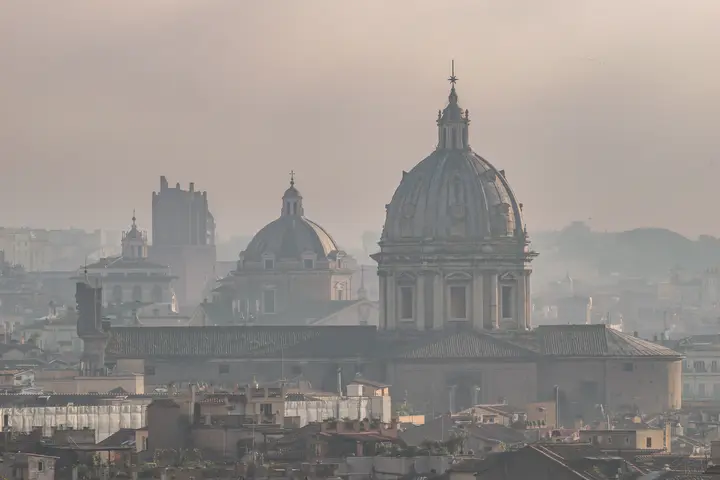
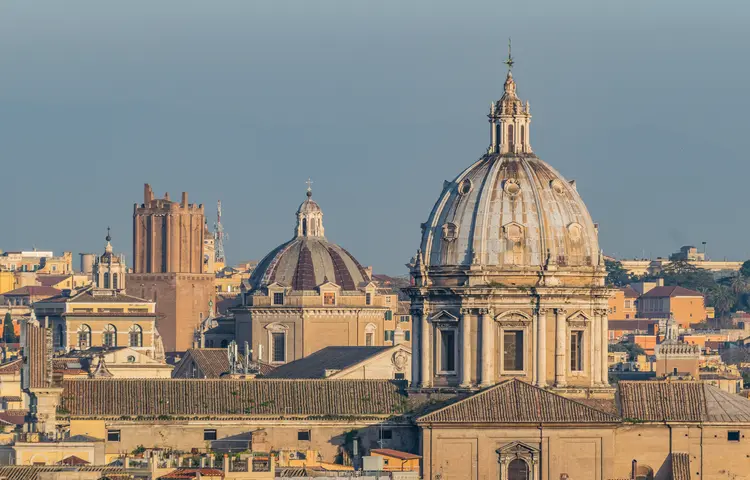
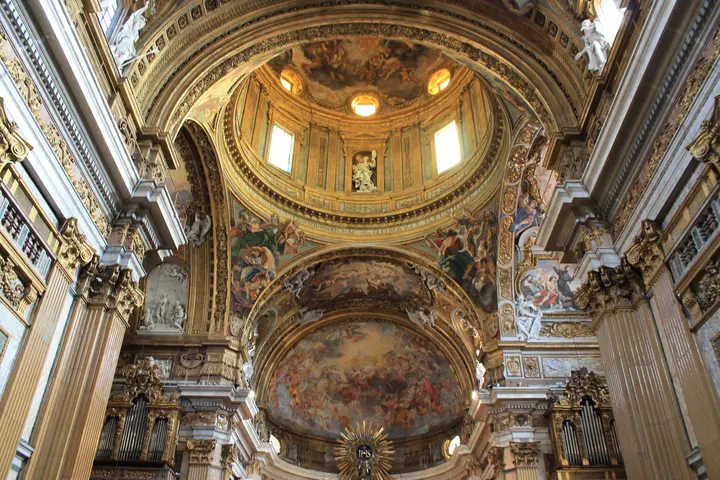
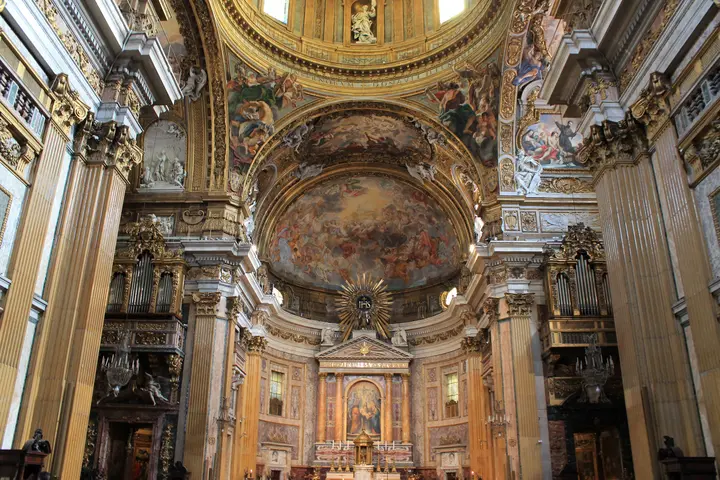
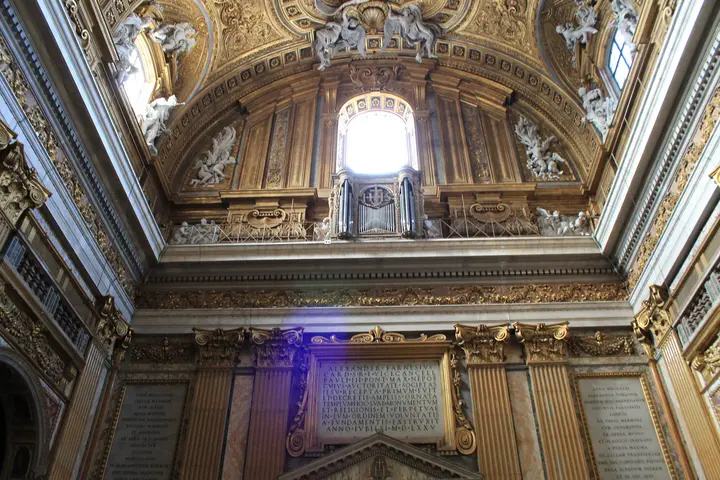
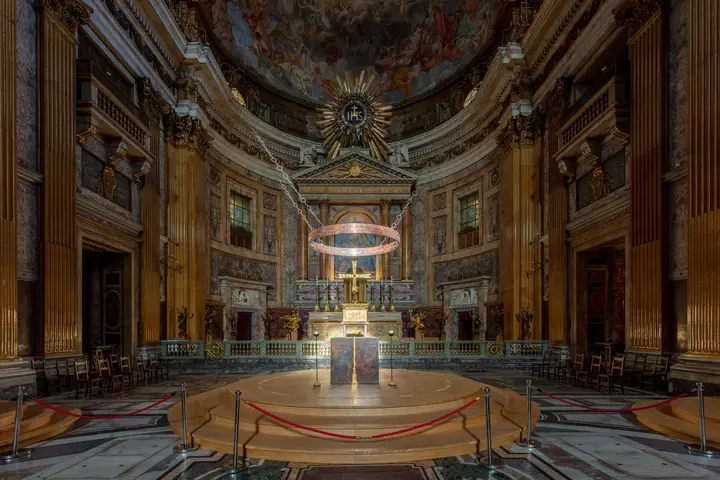
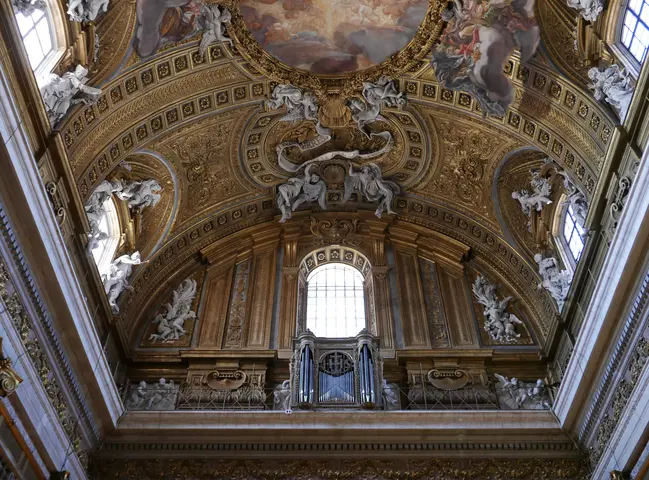


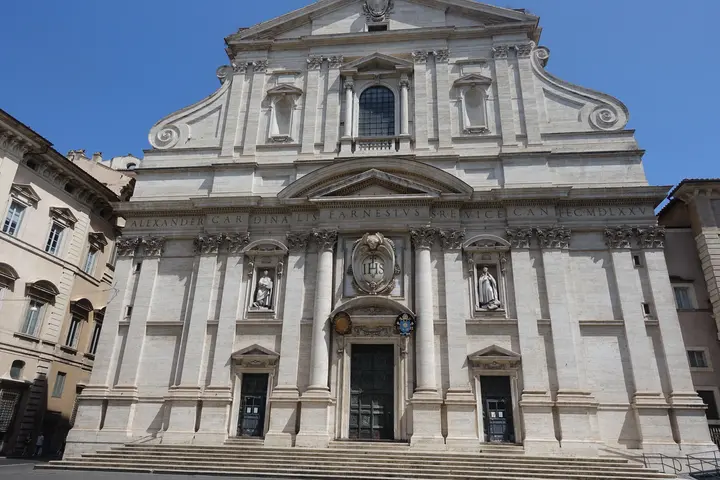
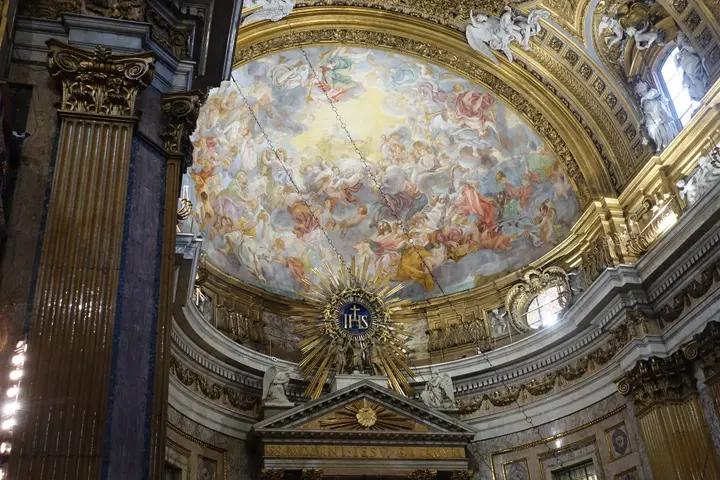
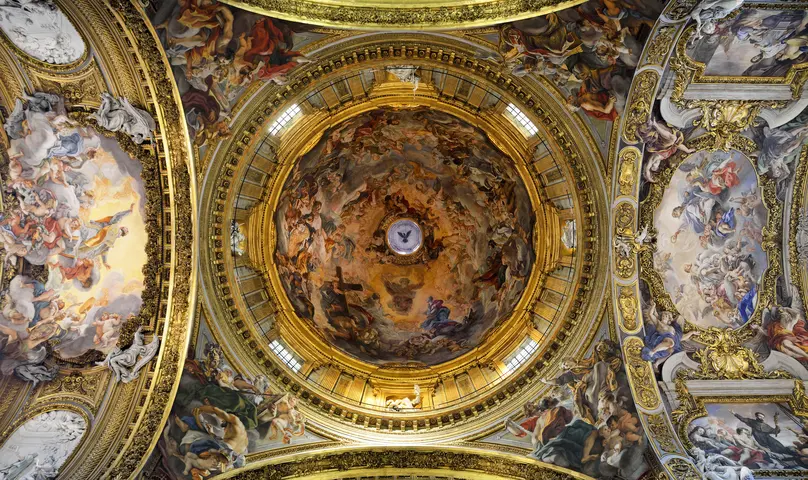
Introduction
The Chiesa del Gesù in Rome invites us to explore the birthplace of Jesuit Baroque. This grand Roman monument reshaped church architecture and spiritual life, serving as the Jesuit order’s mother church since 1584. Its soaring dome, vibrant frescoes, and lively rituals make it much more than just a triumphal arch of faith—it remains a living heart of Roman heritage for locals and visitors alike.
Historic Highlights
🏛️ Origins and Farnese’s Vision
Chiesa del Gesù in Rome marks a turning point in church design. After Ignatius of Loyola founded the Jesuit order, their mission called for a church to inspire and assemble crowds. Cardinal Alessandro Farnese, a powerful patron, financed its construction starting in 1568, choosing Vignola’s plans for a pioneering single-nave format. Farnese’s influence left an indelible mark, from ambitious scale to his name boldly carved on the façade.
“The church is to have a single nave, not a nave and aisles, and there are to be chapels on both sides.”
— Cardinal Farnese’s instructions to Vignola, 1568
🎨 Baroque Breakthrough and Artistic Splendor
Completed in 1584, Chiesa del Gesù’s façade—revised by Giacomo della Porta—heralded the first Baroque church front, with dramatic vertical rhythms and unified forms. Inside, broad nave and interlinked chapels shape an auditorium for preaching—echoing Counter-Reformation reforms. In the late 1600s, ceilings were transformed by Baciccio’s luminous "Triumph of the Name of Jesus." Clouds and saints seem to spill into our world, stirring awe—a Jesuit goal realized through Baroque illusion. Jesuit patrons and families enriched each side chapel with marbles and altarpieces, and Andrea Pozzo’s Chapel of St. Ignatius, once home to a silver statue, adds lasting drama—though Napoleon’s troops famously melted it down in 1798 for war funds.
“At half-past five, Ignatius shows himself,”
— Local saying about the chapel’s daily unveiling ritual
⛪ Living Traditions and Local Identity
The Chiesa del Gesù is woven into Rome’s urban life. Locals pause for its bells, and its feast days and processions animate the piazza. The daily “Little Miracle” at 5:30 pm in the St. Ignatius Chapel—when a painting lowers to reveal the saint’s statue—delights visitors and residents alike. Devotees cherish relics, like St. Francis Xavier’s arm, drawing crowds on December 3. The church’s Madonna della Strada icon, restored in 2006, holds centuries of healing legends. During the Jesuit suppression in 1773, and later the Napoleonic looting, the church weathered loss and adaptation, returning to vibrancy after the Jesuits’ restoration in 1814.
🔧 Preservation and Modern Role
Today, conservation efforts keep Chiesa del Gesù and its treasures in prime condition—façade and frescoes gleam thanks to careful restoration. The church faces challenges from air pollution, city vibrations, and climate change, but regular monitoring and dedicated teams protect its legacy. Standing as a beloved Roman monument, the Gesù remains a hub for both worship and Baroque discovery for all who pass through its doors.
💡 Visitor Tip
Arrive before 5:30 pm for the St. Ignatius statue unveiling—it’s a unique Roman tradition blending faith and spectacle!
Timeline & Context
Historical Timeline
- 1540 – Society of Jesus (Jesuit order) founded by Ignatius of Loyola.
- 1568 – Construction of Chiesa del Gesù begins under architect Vignola, backed by Cardinal Farnese.
- 1573 – Vignola dies; Giacomo della Porta completes works, including the iconic façade (1575).
- 1584 – Church is consecrated and opens as Jesuit mother church in Rome.
- 1678–79 – Baciccio completes the "Triumph of the Name of Jesus" ceiling fresco.
- 1696–1700 – Pozzo’s Chapel of St. Ignatius in left transept constructed.
- 1773 – Jesuit order suppressed; church held by secular clergy.
- 1798 – Napoleonic troops loot church, melt St. Ignatius’s silver statue.
- 1814 – Jesuit order restored; church regains status as Jesuit mother church.
- 1843 – New high altar and apse revetment installed, major 19th-century restorations.
- 1996 – Major restoration and façade cleaning ahead of Millennium Jubilee.
- 2006 – Restoration of Madonna della Strada icon.
Architectural Innovation and Baroque Pedagogy
The Chiesa del Gesù introduced a spatial revolution in church design—a wide, uninterrupted nave without aisles, with side chapels for focused devotion. This plan, inspired by Cardinal Farnese and Counter-Reformation mandates, privileged direct engagement with the liturgy and preacher. Its façade, completed by Giacomo della Porta, blended classical balance and bold baroque forms—serving as an archetype for churches across Europe. The transition from Vignola’s Renaissance restraint to Della Porta’s dynamic verticality reflects both patronal ambitions and liturgical priorities shaped by Council of Trent reforms.
Symbol of Counter-Reformation Identity
Il Gesù’s construction coincided with Catholic efforts to reaffirm faith and authority after the Protestant Reformation. Its open hierarchy, prominent relics, and themed art projected triumphal Catholic messages. The church served as an influential public space for Jesuit preaching, education, and spectacle. The use of visual drama, particularly Gaulli’s celebrated nave fresco, harnessed Baroque illusion to draw worshippers emotionally—art in service to faith. The building expressed both institutional and personal pride: as Cardinal Farnese claimed, the Gesù was among the “three most beautiful things in Rome,” a testament to elite patronage’s power in shaping cultural memory.
Patronage, Loss, and Cultural Resilience
Patronage by the Farnese family directly shaped the Chiesa del Gesù’s opulence, while later donations furnished its chapels and art. Political turmoil—especially the Jesuit suppression and French occupation—brought loss: treasures like the silver statue of St. Ignatius were taken, and sacred spaces repurposed. Yet the resilience of the church community, coupled with Rome’s reverence for local identity, preserved ritual traditions and communal bonds. The return of the Jesuits in 1814 marked a cultural renewal, echoed in subsequent 19th-century artistic and architectural modernization.
Comparative Influence and International Legacy
The Gesù’s layout and formal motifs became the Jesuit architectural hallmark, shaping not only Sant’Ignazio di Loyola in Rome—renowned for Andrea Pozzo’s trompe-l’oeil dome—but also churches across Europe and beyond. Its mixture of innovation and tradition, from pedagogic single-nave plans to spectacular Baroque ceilings, represents the Jesuit ethos: engagement through clarity, beauty, and awe. This cross-pollination fostered a recognizably “Jesuit Baroque” idiom, influencing sites ranging from Chiesa Nuova in Rome to Jesuit churches in Munich and Latin America.
Modern Challenges: Conservation and Heritage Stewardship
Preservation efforts in recent decades reflect advances in heritage science and a growing awareness of environmental threats. Restoration programs have cleaned and stabilized major artworks, responding to air pollution, vibration, and climate pressures. Active liturgical life and community engagement anchor the church’s living heritage, maintaining a balance between spiritual use and cultural tourism. However, ongoing vigilance is needed: funding gaps, increasing visitor impact, and unpredictable climate effects continue to pose challenges, requiring adaptive strategies and cross-sector cooperation.
Conclusion: A Living Monument, Past and Present
Chiesa del Gesù stands as a testament both to Rome’s Counter-Reformation renewal and to enduring community values. Its influence on art and architecture is matched by its role as a center of devotion, ritual, and Roman identity. Efforts to conserve its treasures and traditions demonstrate how heritage can bridge past and present, inviting cultural tourists, educators, and locals to experience history not as distant memory, but as vibrant, ongoing story.